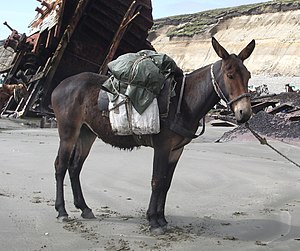**Group 1: Definition and Examples of Hybrids**
– The term ‘hybrid’ originated from the Latin word ‘hybrida’ and gained popularity in English in the 19th century.
– Popular examples include ligers and tigons, which are tiger-lion hybrids.
– Hybridization involves crosses between different species or populations, resulting in unique genetic combinations.
**Group 2: Biological Aspects of Hybrids**
– Hybrids typically exhibit intermediate traits from both parent organisms.
– Sterility in hybrids is often due to differences in chromosome numbers.
– Various mechanisms, such as genetic differences and barriers, limit successful hybridization in plants and animals.
**Group 3: Genetic Aspects of Hybrids**
– Genetic hybrids carry different alleles of the same gene.
– Different types of hybrids exist, including structural hybrids and numerical hybrids.
– Genetic complementation through hybridization helps identify gene defects in mutants.
**Group 4: Human Impact and Historical Significance of Hybrids**
– Human activities have increased interbreeding and hybridization, threatening species with extinction.
– Selective breeding of domesticated animals and plants has led to the creation of distinct breeds.
– Genetic erosion from monoculture farming practices damages gene pools and biodiversity.
**Group 5: Hybridization in Different Taxa**
– Hybridization occurs in various taxa, including animals, plants, insects, fish, and humans.
– Examples include equid hybrids like mules, plant hybrids like Triticale, and human interbreeding with Neanderthals and Denisovans.
– Hybridization plays a role in speciation, genetic mixing, and the evolution of different species.
In biology, a hybrid is the offspring resulting from combining the qualities of two organisms of different varieties, species or genera through sexual reproduction. Generally, it means that each cell has genetic material from two different organisms, whereas an individual where some cells are derived from a different organism is called a chimera. Hybrids are not always intermediates between their parents (such as in blending inheritance), but can show hybrid vigor, sometimes growing larger or taller than either parent. The concept of a hybrid is interpreted differently in animal and plant breeding, where there is interest in the individual parentage. In genetics, attention is focused on the numbers of chromosomes. In taxonomy, a key question is how closely related the parent species are.

Species are reproductively isolated by strong barriers to hybridization, which include genetic and morphological differences, differing times of fertility, mating behaviors and cues, and physiological rejection of sperm cells or the developing embryo. Some act before fertilization and others after it. Similar barriers exist in plants, with differences in flowering times, pollen vectors, inhibition of pollen tube growth, somatoplastic sterility, cytoplasmic-genic male sterility and the structure of the chromosomes. A few animal species and many plant species, however, are the result of hybrid speciation, including important crop plants such as wheat, where the number of chromosomes has been doubled.
Human impact on the environment has resulted in an increase in the interbreeding between regional species, and the proliferation of introduced species worldwide has also resulted in an increase in hybridization. This genetic mixing may threaten many species with extinction, while genetic erosion from monoculture in crop plants may be damaging the gene pools of many species for future breeding. A form of often intentional human-mediated hybridization is the crossing of wild and domesticated species. This is common in both traditional horticulture and modern agriculture; many commercially useful fruits, flowers, garden herbs, and trees have been produced by hybridization. One such flower, Oenothera lamarckiana, was central to early genetics research into mutationism and polyploidy. It is also more occasionally done in the livestock and pet trades; some well-known wild × domestic hybrids are beefalo and wolfdogs. Human selective breeding of domesticated animals and plants has resulted in the development of distinct breeds (usually called cultivars in reference to plants); crossbreeds between them (without any wild stock) are sometimes also imprecisely referred to as "hybrids".
Hybrid humans existed in prehistory. For example, Neanderthals and anatomically modern humans are thought to have interbred as recently as 40,000 years ago.
Mythological hybrids appear in human culture in forms as diverse as the Minotaur, blends of animals, humans and mythical beasts such as centaurs and sphinxes, and the Nephilim of the Biblical apocrypha described as the wicked sons of fallen angels and attractive women.





